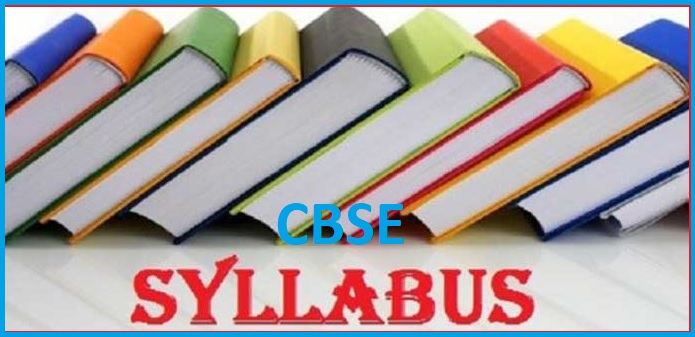Computer Science is a major subject in the academic electives group at class 12th level. Candidates who have opted this subject at the class 12 level are required know the detailed syllabus so that they can prepare for this subject in a better manner. The CBSE Class 12 Computer Science Syllabus 2024-25 is designed by the experts in a manner that it covers all the topics important from exam point of view. Candidates can find the details of the syllabus here from this article.
CBSE Class 12 Computer Science Syllabus 2024-25
Candidates appearing for the board exams must gain familiarity with the complete syllabus and then prepare for the exam accordingly. Basic details of the CBSE computer science syllabus 2024 are provided below:
Unit I: Computational Thinking and Programming – 2
- Revision of the basics of Python covered in Class XI.
- Functions: scope, parameter passing, mutable/immutable properties of data objects, passing strings, lists, tuples, dictionaries to functions, default parameters, positional parameters, return values, functions using libraries: mathematical and string functions.
- File handling: Need for a data file, Types of file: Text files, Binary files and CSV (Comma separated values) files.
- Text File: Basic operations on a text file: Open (filename – absolute or relative path, mode), Close a text file, Reading and Manipulation of data from a text file, Appending data into a text file, standard input / output and error streams, relative and absolute paths.
- Binary File: Basic operations on a binary file: Open (filename – absolute or relative path, mode), Close a binary file, Pickle Module – methods load and dump; Read, Write/Create, Search, Append and Update operations in a binary file.
- CSV File: Import csv module, functions – Open, Close a csv file, Read from a csv file and Write into a csv file using csv.reader ( ) and csv.writerow( ).
- Using Python libraries: Import Python libraries.
- Data-structures: Lists as covered in Class XI, Stacks – Push, Pop using a list.
10 Best Laptops For College Students
Unit II: Computer Networks
Evolution of Networking: ARPANET, Internet, Interspace Different ways of
sending data across the network with reference to switching techniques (Circuit and Packet switching).
Data Communication terminologies: Concept of Channel, Bandwidth (Hz, KHz,
MHz) and Data transfer rate (bps, Kbps, Mbps, Gbps, Tbps).
Transmission media: Twisted pair cable, coaxial cable, optical fiber, infrared,
radio link, microwave link and satellite link.
Network devices: Modem, RJ45 connector, Ethernet Card, Router, Switch,
Gateway, WiFi card.
Network Topologies and types: Bus, Star, Tree, PAN, LAN, WAN, MAN
Network Protocol: TCP/IP, File Transfer Protocol (FTP), PPP, HTTP, SMTP,
POP3, Remote Login (Telnet) and Internet, Wireless / Mobile Communication
protocol such as GSM, GPRS and WLL.
Mobile Telecommunication Technologies: 1G, 2G, 3G, 4G and 5G; Mobile
processors; Electronic mail protocols such as SMTP, POP3, Protocols for Chat and Video Conferencing: VoIP, Wireless technologies such as Wi-Fi and WiMax
Network Security Concepts:Threats and prevention from Viruses, Worms, Trojan horse, Spams Use of Cookies, Protection using Firewall, https; India IT Act, Cyber Law, Cyber Crimes, IPR issues, hacking.
Introduction To Web services: WWW, Hyper Text Markup Language (HTML),
Extensible Markup Language (XML); Hyper Text Transfer Protocol (HTTP);
Domain Names; URL; Website, Web browser, Web Servers; Web Hosting.
Unit III: Database Management
Database Concepts: Introduction to database concepts and its need.
Relational data model: Concept of domain, relation, tuple, attribute, degree, cardinality, key, primary key, candidate key, alternate key and foreign key;
Structured Query Language:
General Concepts: Advantages of using SQL, Data Definition Language and Data Manipulation Language;
Data Types: number / decimal, character / varchar / varchar2, date; SQL commands covered in class XI (2019-20)
SELECT, DISTINCT, FROM, WHERE, IN, BETWEEN, LIKE, NULL / IS NULL, ORDER BY, GROUP BY, HAVING;
SQL functions: SUM ( ), AVG ( ), COUNT ( ), MAX ( ) and MIN ( );
Joins: equi-join and natural join
Interface of Python with an SQL database
- Connecting SQL with Python
- Creating Database connectivity Applications
- Performing Insert, Update, Delete queries
- Display data by using fetchone(),fetchall(),rowcount
List of Practicals
Python Programming
Read a text file line by line and display each word separated by a #.
Read a text file and display the number of vowels/ consonants/ uppercase/ lowercase characters in the file.
Create a binary file with name and roll number. Search for a given roll number
and display the name, if not found display appropriate message.
Create a binary file with roll number, name and marks. Input a roll number and
update the marks.
Remove all the lines that contain the character `a’ in a file and write it to another file.
Write a random number generator that generates random numbers between 1
and 6 (simulates a dice).
Write a Python program to implement a stack and queue using a list data-
structure.
Create a CSV file by entering user-id and password, read and search the password for
given userid.
Database Management
Create a student table and insert data. Implement the following SQL commands on the student table:
ALTER table to add new attributes / modify data type / drop attribute
UPDATE table to modify data
ORDER By to display data in ascending / descending order DELETE to
remove tuple(s)
GROUP BY and find the min, max, sum, count and average
Similar exercise may be framed for other cases.
Integrate SQL with Python by importing the MySQL module.
CBSE Computer Science New Syllabus : Download PDF
Also Check
CBSE Class 12th Syllabus (All Subjects)




good
Good